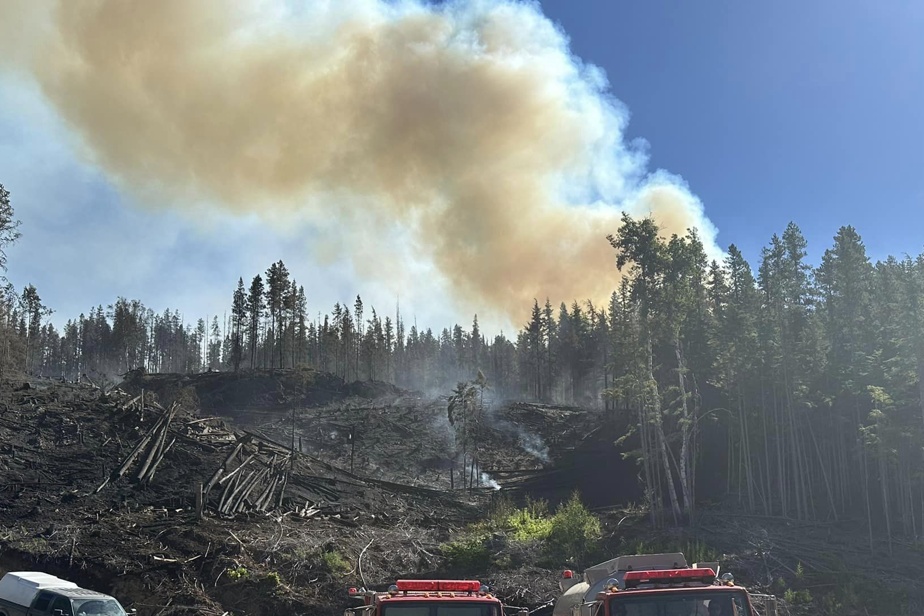The number of wildfires burning in British Columbia has increased by more than 20 to about 130, with the heat wave contributing to the increase.
Two forest fires of interest, meaning they are highly visible or represent a threat to public safety, are located in the northwest of the province.
The BC Wildfire Service says smoke from the 130-hectare Little Oliver Creek fire is visible from Highway 16 and the Terrac area, while the 240-hectare Hook Creek fire is burning out of control to the north near the Yukon border.
In northeastern British Columbia, Fort Nelson First Nation issued an evacuation order Tuesday for the Kahntah reserve, telling residents they should leave by boat because of the threat of an out-of-control fire discovered the day before.
The wildfire service says a provincewide campfire ban will go into effect at noon Friday, with the exception of the Haida Gwaii Forest District.
The fires come as a heat wave begins to move away from the coast toward the Prairies, while Environment Canada heat warnings remain in effect for northeastern British Columbia and parts of the central and southern Interior of the province.
The wildfire service’s map shows a cluster of about two dozen new fires burning in the Cariboo region.
In Quesnel, west of the new fires, Environment Canada is forecasting temperatures to reach 31C on Wednesday, with a risk of thunderstorms.
Temperatures dropped to more seasonal levels in Metro Vancouver and Vancouver Island on Wednesday, and a cold front is expected to sweep across northern British Columbia on Thursday.
But the mercury is still expected to reach 39 C in Kamloops on Wednesday, with temperatures in the 30 C range expected to persist until at least Tuesday.
The BC Wildfire Service says the cold front in northern B.C. is expected to bring strong winds, thunderstorms and a risk of lightning to the drought-stricken region. It also expects wildfires to break out there.
He added that his staff are constantly monitoring and assessing conditions and resources are being deployed to areas where the risk is highest.
According to Environment Canada, 37 daily temperature records were tied or broken in British Columbia on Tuesday.
The Lytton area was again a hot spot, recording a daily maximum of 42.5°C, breaking the previous record (40.6°C), set on 9 July 1975.
Dozens of daily records fell Sunday, Monday and Tuesday in British Columbia.
